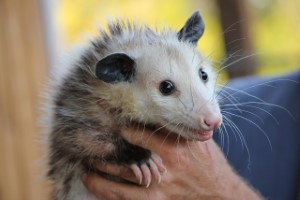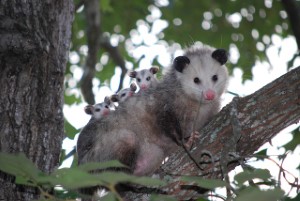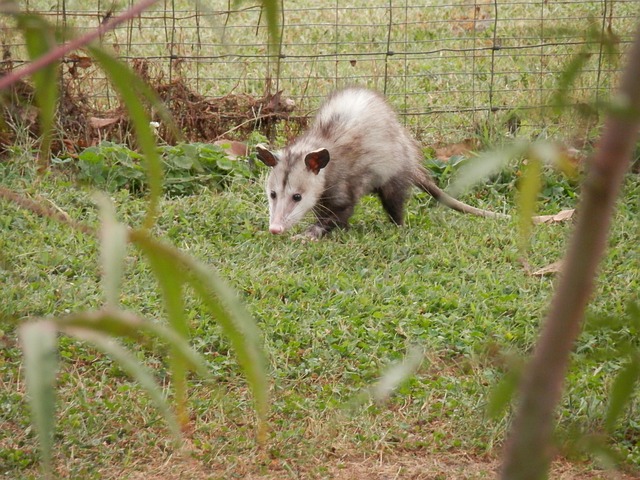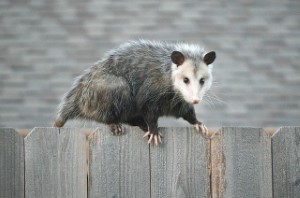OPOSSUMS
OPOSSUMS - LONG ISLAND, NEW YORK
The opossum is a solitary animal found throughout North America and Central America, from Costa Rica to Mexico. In the United States, it is found east of the Rocky Mountains and north into southern Ontario, Canada. Opossums can also be found on the west coast of the United States and in British Columbia, Canada, and they are expanding their range northward at a significant pace. Opossums inhabit various habitats, ranging from deserts to wet meadows, but prefer residing in woodlands and thickets near a water source. They can be found in lowlands to elevations approaching ten thousand feet. Opossums are semiarboreal omnivores that grow to the size of a cat. Their diet consists primarily of insects, worms, dead animals, amphibians, reptiles, birds and their eggs, berries, fruits, crustaceans, and small mammals.

The opossum does not hibernate and is the only marsupial native to North America. These nomadic, nocturnal animals don't build their own dens; instead, they find existing and abandoned dens of other animals and claim them as their own. Opossums commonly nest in tree hollows, wood piles, rock crevices, under buildings, and decks. They also nest in sheds, garages, and attics of Long Island homes. Opossums' long, scaly, scantily-haired, prehensile tails help to stabilize the opossum when climbing. The tail is also used to carry leaves that they will use to insulate their nests with. In the Spring, a female will give birth to as many as twenty offspring. The newly born opossum pups, also known as joeys, will find their way to their mother's pouch, where they will attach to a teat and further develop. The opossum pups are weaned between seventy and one hundred twenty-five days when they will leave their mother's pouch. The lifespan of the opossum is usually one to two years in the wild. Although any mammal can become infected with the rabies virus, the opossum rarely does because its body temperature is slightly lower than other animals. However, opossums are often infested with fleas, which transmit zoonotic diseases.

OPOSSUM PLAYING POSSUM
While traveling at night, the opossum faces many dangers. It may be struck by a motor vehicle and become roadkill or eaten by a predator such as a great horned owl, fox, or coyote. When threatened, the opossum's first choice is to run from danger. Unfortunately, opossums do not run fast. When cornered, the opossum will growl, hiss, and open its mouth to display its fifty sharp teeth. If this warning fails to ward off a potential threat, the opossum collapses and plays possum. Contrary to popular belief, these critters are not staging a dramatic play of their own demise. Instead, they enter a state of tonic immobility, a physiological response to extreme stress. The opossum suffers a state of temporary shock, and it drools and defecates. The opossum's heart rate slows down, breathing becomes shallow, and the animal appears to be dead. Predators will lose interest in and instinctively release seemingly lifeless prey. When an opossum becomes involuntarily immobilized, it can take anywhere from a few minutes to several hours for them to start moving again.

OPOSSUMS: SENSES AND INTELLIGENCE
Opossums have an acute sense of smell and touch, but their hearing is not especially keen, and their eyesight is poor. Their world is controlled by scent and touch. The opossum's long nose gives them a remarkable sense of smell, and their even longer facial vibrissae, or whiskers, provide them with a sphere of sensory input around their heads.
Like other marsupials, the opossum's brain lacks a corpus callosum, a band of nerve fibers that facilitates communication between the left and right hemispheres of the animal's brain. Opossums have the smallest brain-to-weight ratio of any North American mammal; regardless, they are an incredibly adaptable species that has thrived in North America. They are intelligent and have an impressive memory—at least when locating food. Researchers discovered that opossums are better at remembering which maze led to food than cats, rats, dogs, and pigs.

OPOSSUM CONTROL IN NASSAU COUNTY, NEW YORK
Opossum Inspection is the initial step in the opossum control program. Humane opossum trapping professionals from Nassau County Nuisance Wildlife Removal Services will inspect your house or place of business, looking for evidence of opossum inhabitation.
SIGNS OF OPOSSUMS
Opossum Dens - These are commonly lined with leaves and twigs.
Opossum Footprints - Both the front and hind feet have five digits. The inner digit of the hind foot is opposable and looks like a human thumb.
Opossum Droppings -These are roughly the same size as cat feces. They are one to three inches long and taper to a pointed end.
HOW TO GET RID OF OPOSSUMS LONG ISLAND, NEW YORK
Opossum Repellents - Numerous opossum repellents can be purchased at hardware stores and online, including predator urine, granular repellents, liquid spray repellents, ultrasonic devices, and motion-activated water repellent devices. The truth is, none of the possum repellents gets rid of opossums. Even if the spray and granular repellents eliminated opossums, what happens when it rains? The quick-fix wildlife repellent just got washed away. The Federal Trade Commission has stated that there is no scientific research that demonstrates that ultrasonic devices eliminate nuisance wildlife.
Opossum Trapping - Humane wildlife trapping is the only effective method to eliminate opossums and is the strategy used by nuisance wildlife control operators at Nassau County Nuisance Wildlife Removal Services. Knowing what humane opossum trap to use and what bait to use largely depends upon the time of the year. The humane opossum trapping technique that our Nassau County wildlife removal experts use is also contingent upon the situation and where the opossums are gaining entrance into your Nassau County residence or business. Our nuisance wildlife control experts know what humane opossum trap and what bait to use in every scenario.
Opossum Exclusion - Upon completing the opossum removal, we will send out a licensed Nassau County contractor specializing in wildlife exclusion to give you a free estimate on any repairs needed to be completed to keep possums out. Our nuisance wildlife control operators will suggest any modifications that can be made to your residence or business to prevent future encounters with opossums or unwanted wildlife.
Opossum Habitat Modification - The objective is to make your premises less attractive to opossums.
•) Firewood must be tightly stacked, leaving no gaps where opossums could nest.
•) Trees and shrubs that overhang rooftops must be cut back at least six feet from the roof's edge.
•) Trash cans must have locking lids so that opossums scavenging for food don't fall into them.
•) Never leave pet food outdoors.
•) Don't put food items into a compost pile.
•) Keeping your home, garage, and shed in good repair will prevent opossums from gaining entrance into them.
•) If fruit trees are in your yard, remove fruit that has fallen to the ground to avert opossums from feeding on it.